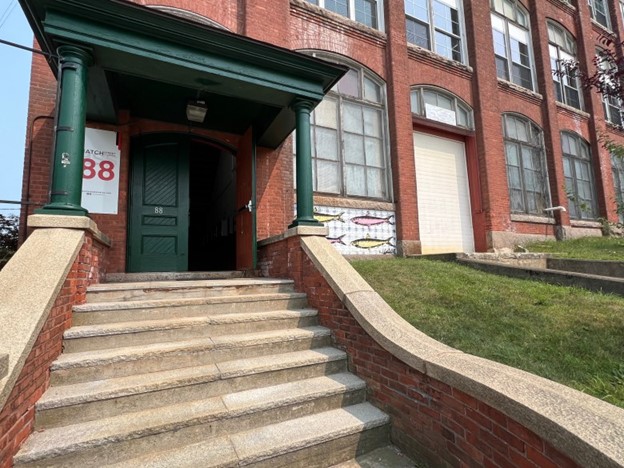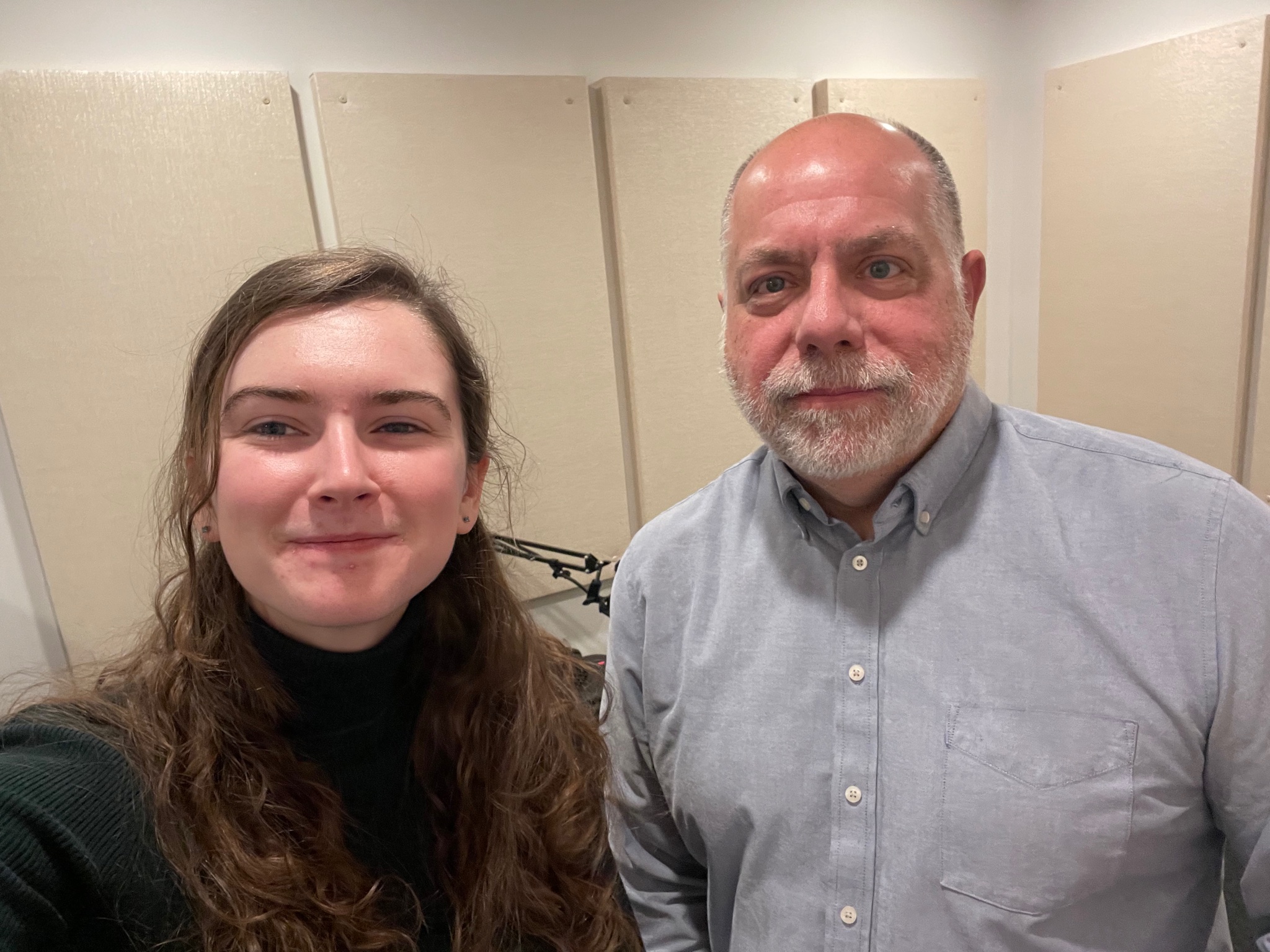by Annica Dupre
This story was originally published in The New Bedford Light, a publication partner of Ocean State Stories.
NEW BEDFORD — Ten years after Jeff Glassman purchased the old textile mill on Hatch Street, the community of local artists in the converted building has grown — and they are hoping to lay the foundation for even more arts in New Bedford over the next decade.
Glassman, the owner of the clothing repair company Darn It! Inc., bought the building in 2015. Under the previous owner, only the upper two floors were rented out to artists, while the owner operated his business out of the lower two floors.
“The arts community, at Hatch Street and in New Bedford, was concerned that I was going to turn the building into a commercial, industrial, or even residential space,” Glassman remembers. “I told them from the get-go that it was going to remain an artist community.”
Glassman transformed the second floor into additional studio space. Now, there are over 65 artists working in Hatch Street, including painters, potters, and 3D printers. There are even martial arts and clowning studios.
“I know pretty well just about everybody in the building, barring a few new people,” said Corrinn Jusell, a ceramicist. “Hatch has been a really lovely place for me to grow as an artist — especially for me, as a young person, to be surrounded by some really established artists.”
Woodworker Michael Pietragalla moved into the building in 2000, and he said that he’s witnessed Hatch Street evolve, both as a community and a building.

“[The former owner] really didn’t do too much to keep the building up,” he said. “The windows that we had at the time were literally falling apart. The owner was like, ‘We’ve got nothing to do with it. We’ll give you a piece of plywood to screw onto the window, but we’re not replacing them.’”
When Glassman took over, he set off on updating the building’s signage, installing new lights, painting the halls, and replacing the windows. “He really spruced up the place and made it a lot more welcoming,” Pietragalla said.
In another initiative, Glassman hired a building manager this year, Melissa Jackson, to steward the building and its events — especially the open studio events, where members of the public can visit the studios and buy the artists’ work.
Hatch Street’s artists have hosted open studio events since 2002. The artists were responsible for planning, promoting, and running the event, as well as coordinating with outside vendors and nonprofits.

There used to be one open studio event in the autumn, but Glassman added a spring edition. “I would help out and fund a lot of the events,” Glassman said. “But many of the artists don’t have much time for volunteer work, and [the Artists Association that ran it] was a volunteer organization.”
By hiring Jackson, Glassman said he hopes to ease the burden on the artists and “really put more time into advertising, marketing, outreach, and getting the right artists into the building.”
Glassman has also sought to foster a sense of community in the studios, he said. “When I first bought the building, the artists would come in during the day, lock their doors, and shut the door behind them, and then leave when they were done.”
Some artists said that it’s an ongoing struggle to build community. “The community’s changed a lot,” Pietragalla said. “People have moved away, people have died. I kind of get a feeling that maybe some people want to keep to themselves.”
When another local studio, at 21 Cove St., sold in 2011, many artists from that building moved into Hatch Street. Pietragalla said that was a high point of the artist community.
“[Artists] would support each other by going to their openings or promoting them,” Pietragalla said. “There was a huge sense of community at that time.”
“That’s the thing: if you want a community, you move into a building like this,” Pietragalla said. “If you want to be by yourself, you either come in here and lock the door, or you have your studio in your garage.”

Textile artist Amy C. Lund would prefer Hatch Street to be interactive and accessible to the public beyond the open studio events. Her studio, which also serves as a retail space and classroom, is designed to give customers a glimpse into the artist’s process. “People want to see how art is made,” she said.
“When people in your own city haven’t heard of Hatch Street Studios, how will they ever see what fabulous things are going on in here?” she added.
Other artists don’t feel that disconnect. Michelle T. Lapointe primarily works with stained glass, but when she was exploring with wood, Pietragalla showed her how to use a bandsaw. Jim Jezierski, another woodworker, built a glass rack for Lapointe.

“That’s originally what my dream was,” Pietragalla said. “To have a building or a co-op, or a group of artists of different trades, that collaborated on different projects together.”
Jusell, the ceramicist, has a studio across the hall from Erik Durant, a sculptor and tenured professor at Bristol Community College. Durant let Jusell crash a couple of his classes so she could learn how to make silicone mother molds, which are an important part of her process now.
Glassman has plans to bring more artists to the building. After a metal fabrication company moved out, Glassman applied for permits to add 10 more studios.
“There’s a lot of really good things happening in the city for the arts community, whether it’s down at the Kilburn Mill, the Z renovation, the Star Store renovation and money being poured into that,” he said. “I want to be part of that, and I want the artists to be part of that.”

Annica Dupre is a summer intern with The New Bedford Light, as part of the South Coast Internship program, designed for local students.






